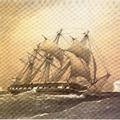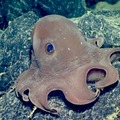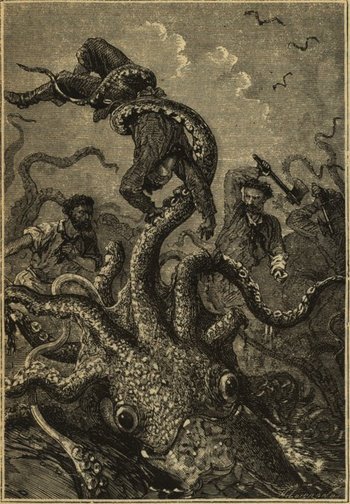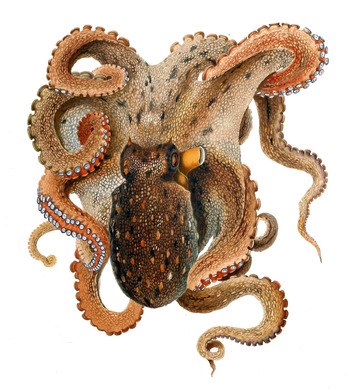The Kraken
Below the thunders of the upper deep,
Far far beneath in the abysmal sea,
His ancient, dreamless, uninvaded sleep
The Kraken sleepeth: faintest sunlights flee
About his shadowy sides: above him swell
Huge sponges of millennial growth and height;
And far away into the sickly light,
From many a wondrous grot and secret cell
Unnumbered and enormous polypi
Winnow with giant fins the slumbering green.
There hath he lain for ages and will lie
Battening upon huge seaworms in his sleep,
Until the latter fire shall heat the deep;
Then once by men and angels to be seen,
In roaring he shall rise and on the surface die.
-Alfred Lord Tennyson, 1830
Of all the myths in the world, few have captured global imagination and enjoyed the longevity of the myth of the "Kraken," a legendary monster that resides below the surface of the ocean. According to Bishop Pontoppidan's The Natural History of Norway the origin of the myth is rooted in the 15th-century Icelandic tale of the Hafgufa and Lyngbakr monsters, which tells of two monsters that terrorize sailors in the North Atlantic. The myth remained popular into the 18th century, when Swedish zoologist Carl Linnaeus theorized that the Kraken was most likely a member of the cephalopod molluscan class of animals. (1)
During the 19th century, the Kraken continued to capture the minds of many scholars, leading to Pierre Denys de Montfort's series of sketches that depicted giant octopuses dragging entire ships into the depths. In 1830, Alfred Lord Tennyson penned his eerie poem "The Kraken" and in 1850 Herman Melville alludes to the Kraken in Moby Dick with a lengthy description in Chapter 59 "Squid."
"A vast pulpy mass, furlongs in length and breadth, of a glancing cream-color, lay floating on the water, innumerable long arms radiating from its centre, and curling and twisting like a nest of anacondas, as if blindly to clutch at any hapless object within reach. No perceptible face or front did it have; no conceivable token of either sensation or instinct; but undulated there on the billows, an unearthly, formless, chance-like apparition of life. As with a low sucking sound it slowly disappeared again, Starbuck still gazing at the agitated waters where it had sunk, with a wild voice exclaimed - 'Almost rather had I seen Moby Dick and fought him, than to have seen thee, thou white ghost!' 'What was it, Sir?' said Flask. 'The great live Squid, which they say, few whale-ships ever beheld, and returned to their ports to tell of it.'… There seems some ground to imagine that the great Kraken of Bishop Pontoppidan may ultimately resolve itself into Squid." (2)
Perhaps the Kraken has remained a relevant myth for so long because of the known existence of giant squid. Throughout history, the presence of giant cephalopods was known because of remnants discovered in sperm whale mouths, as well as carcasses of giant squid that washed ashore.(3) The knowledge of the existence of large tentacled creatures living in the sea doubtlessly fueled speculation about the Kraken. It was only in 2004 that a giant squid was first photographed alive, and in 2012 a giant squid was filmed in the wild for the first time. (4). Measuring an impressive 46 feet, these squid truly are reminiscent of tales of the legendary Kraken.
1. Kraken: Fact or Fiction by Rick Emmer.
2. The Princeton Almagest. <http://etcweb.princeton.edu/batke/moby/moby_059.html>.
3. Discovery Channel: Monster Squid-The Giant is Real. <http://www.discovery.com/tv-shows/curiosity/videos/first-video-of-a-giant-squid.htm>.
4."Giant Squid: Filming the Impossible" <http://www.bbc.co.uk/programmes/b0377t15>.
Contributed by Kane Thomas






